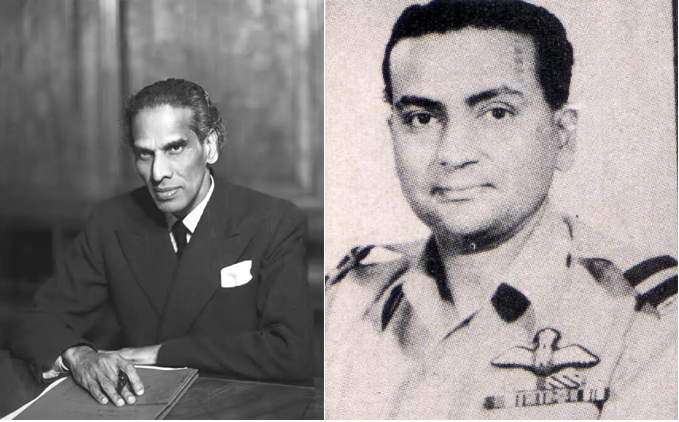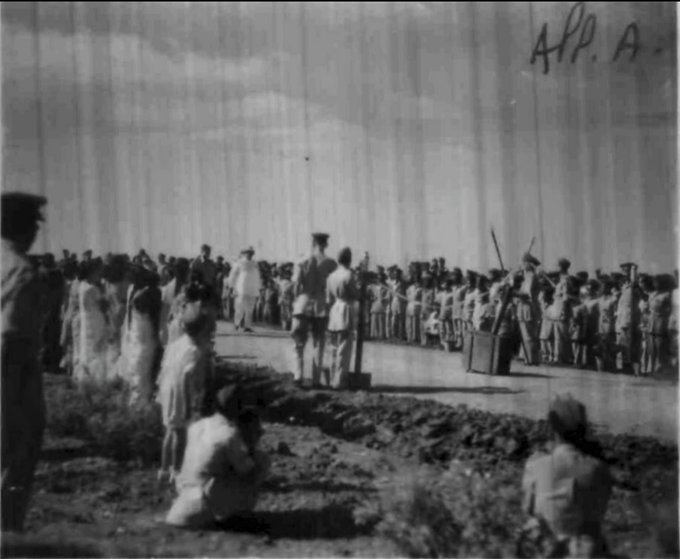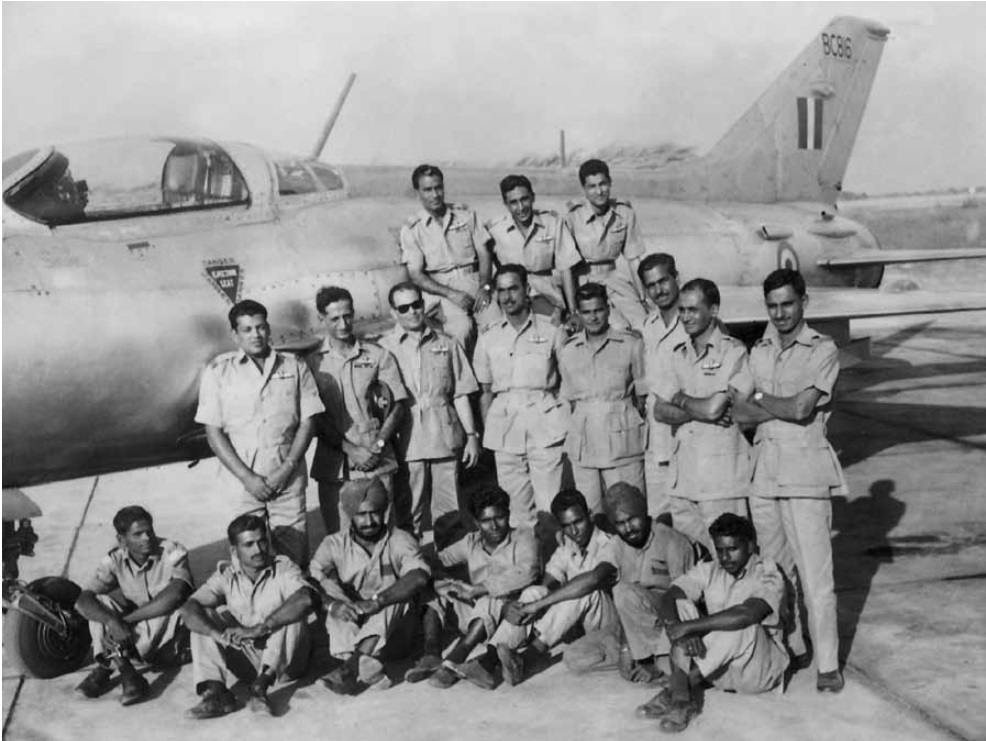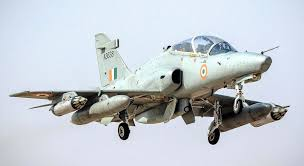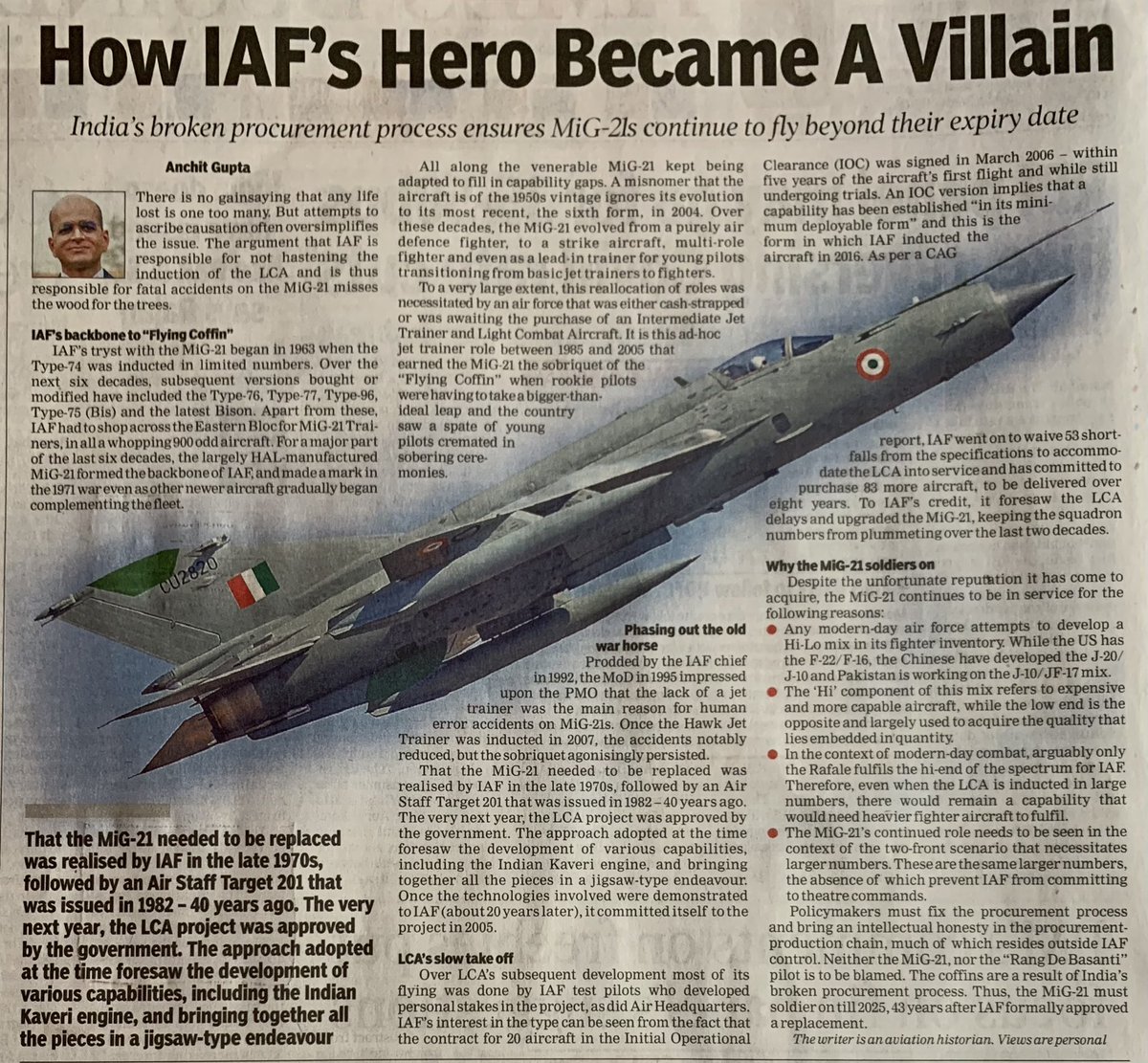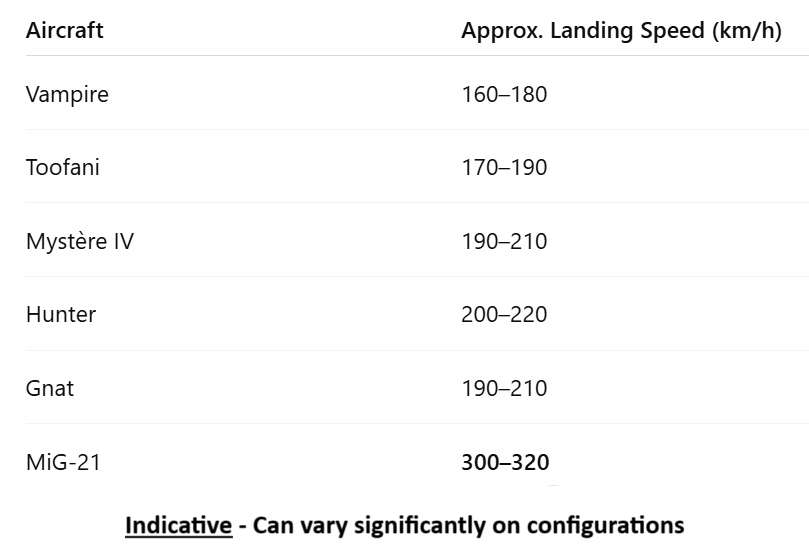Air Cmde Narinder Chatrath(3959) VrC, today passed away,aged 95.He commanded 17 Sqn @IAF_MCC during 71 war that led an attack on Kurmitola, the heavily defended airbase near Dacca taking on a dogfight with two PAF Sabres, shooting one down. May he rest in peace. #IAFHistory (1/6) 

Commissioned in 1950 with 53 Pilot course. Joining the fighter stream, he flew the Spitfire, Tempest, and the Vampires in his initial career. Posted to FIS, he qualified as a flying instructor and was posted to the academy at Begumpet in 1955. 2/ 
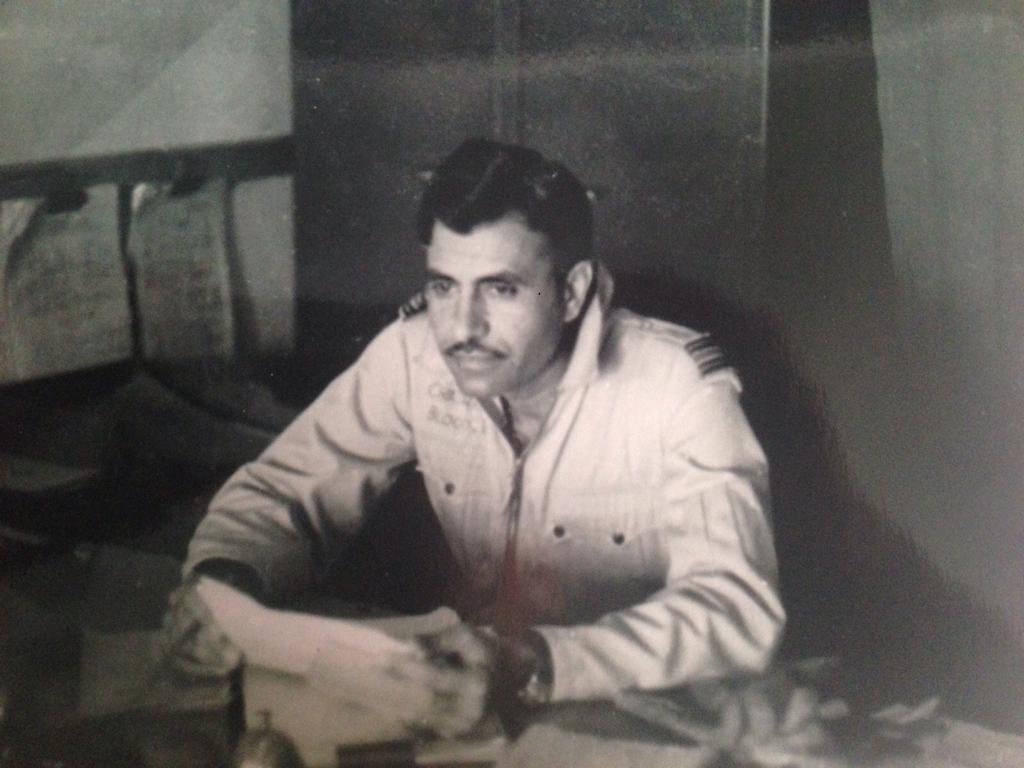
He was ADC to the Chief of Air Staff in 1958, and had the honor to be posted to the Egyptian airforce as an instructor from 1959 to 1961. An honour reserved only for the very best of instructors in the IAF. 3/ 

On return, he was posted to the 55 Auxillary Sqn at Barrackpore as CO, flying the Vampire. In 1963, 55 Aux Sqn became 221 Sqn, IAF and Sqn Ldr Chatrath became the first CO of the Valiants. A snap of him visiting the sqn 4 decades later. 4/ 

Taking over as CO of 17 Sqn, flying the Hunter, Sqn supported 20 Mtn Div from hashimara. Both CO Chatrath and VK Nebb earned Vir Chakra for shooting down PAF fighters. Immediately thereafter, he was promoted to Gp Capt and posted to command the Halwara airbase. 5/ 

After nearly 3 years at Halwara, he attended the NDC course in 1975. Promoted to Air Cmde in 1976, He was Air advisor in London for 3 years, superannuating in 1979 at age 52. He was the first in his course to be promoted to Air Cmde, but age was not on his side to rise further.6/ 

• • •
Missing some Tweet in this thread? You can try to
force a refresh


